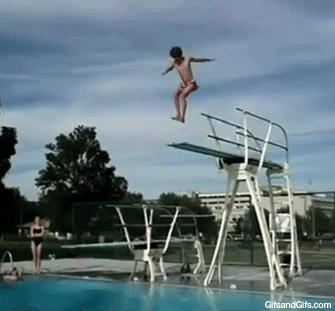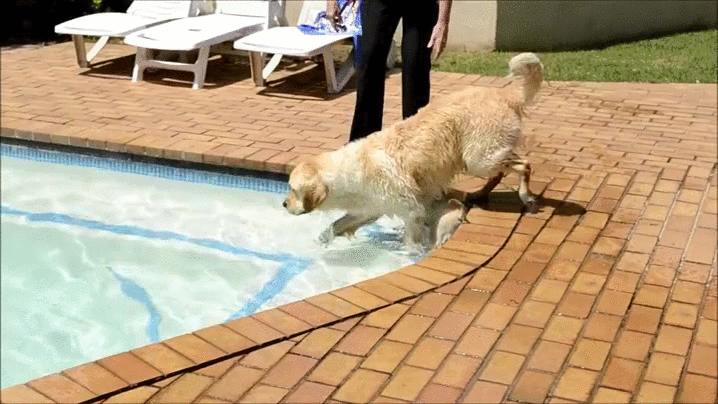We’ve all been there.
Staring at a whiteboard, trying to pick a strategy out of thin air. Struggling to think of a name for your trivia team. Watching that blinking cursor dance atop a fresh document, waiting for your input. Just waiting…
Drawing a blank is all too common when you’re tasked with coming up with something new. Whether it’s in art, business, or life—creativity on tap (like that fresh beer at your local brewery) isn’t something you’re guaranteed to always have.
This problem is something you can prepare for, though. We’ve all got a wellspring of ideas inside us—you just have to know where to find it.
Where Do Ideas Come From?
Deep down, creativity is about problem-solving. But it’s also about finding problems to solve in the first place—perceiving them, defining them, explaining them, and recording them. No matter what reason there is for needing ideas, there are countless ways to uncover them, and everyone has the capability to do it.
Ideas are infinite in supply; as long as the wheels of civilization are turning, there’ll be space for innovation, from the big ideas to the everyday sparks of genius.
And good ideas are within your grasp for every walk of life: a beautiful line of code, a poetic turn of phrase, a way of framing a photograph, a concept for a marketing campaign, a new form of corporate governance, or a grassroots method for inspiring community engagement.
Even if it’s raining, you’re cranky, everything’s gray, and it seems like the world has come to a standstill: it hasn’t. Don’t worry. You can still capture the ideas that are up there, floating in the ether; the ‘strange jewels hidden within you’ as Elizabeth Gilbert puts it in Big Magic: Creative Living Beyond Fear. You just have to be a little strategic about things.
In fact, creative idea generation has been studied in the psychological sciences for decades, and it’s very much a process, rather than a mysterious feat of wizardry. A recent study by the University of Graz, Austria, used advanced fMRI scans to identify the exact area of the brain involved in the creation of novel ideas, the left inferior parietal cortex. And we’ve all got one of those we can make use of.
Thankfully, you don’t need to be an expert in neuroscience to massively upgrade your creative abilities. As long as you prepare for those uninspiring times with a little foresight and some regular practice, you’ll be in a great position to create. Here are a series of techniques you can use to find that idea well deep within you, and keep it replenished at all times.
How To Replenish The Idea Well
1. Diving And Swimming
Diving and swimming is a two-stage technique. It involves deep immersion into a subject matter, then letting go completely while you process that information.
Our ability to make things that matter doesn’t come from a blank slate. All of our endeavors and ideas are guided by the sum of our experiences, memories, and idiosyncrasies. These are constantly evolving as we go through our life’s journey. Our thoughts are guided by the sum of the information we take in. So the first thing to do here is dive in.

This entails immersing yourself in your subject area without specifically looking for an answer to your problem.
As a writer, if I want to fire up my imagination, I’ll go to a bookshop and browse the shelves, picking up whatever takes my fancy, reading the blurbs, and maybe a page or two. You could address other problems like this:
- Stuck on where to take your business? Flick through some general business magazines like Monocle or Fast Company.
- Drawing pad a little blank? Forget the struggle and switch off by scrolling through some topics on Pinterest. Let the algorithm gods serve up some pretty aesthetics and enjoy the ride.
- Feeling unsatisfied in your relationship and need to change things up? Read some old agony aunt columns or browse the latest juicy dilemmas on Reddit /r/relationships.
It almost seems too easy, but the key here is not to go looking for answers. If you come across them, great, but you’re taking this opportunity to trust yourself and your subconscious by taking in the right sort of information, even if you don’t know how it all connects yet.
Then, we get to our second part: go swimming.

This is where we totally switch things around, and send our senses and attention elsewhere. We go swimming in a daydream, letting the mind wander at its own leisure, while the information we’ve taken in swirls around our subconscious.
Give your senses something else to enjoy. Sounds, visuals, scents, environments — anything different from where you actually execute your ideas. (My trick is to play two Youtube videos at the same time: something like a rainy ambient soundscape alongside some atmospheric electronica. No words, just feelings.)
Even better, you could go for a walk. Again, it may seem simple, but it’s a vitally useful technique. Not only is it good for your spiritual, physical, and mental health, it’s a proven method to let good ideas bubble up from the subconscious and into clear view.
In the same way that taking a shower insulates you from external stimuli and lets your mind wander freely (which is why those waterproof shower radios are terrible), going for a walk frees you from the pressure of being productive. It’s a much-needed escape from digital screens and blank canvases, and brings us back to a more serene reality, where there is no explicit goal other than to wander. The technical term for this sort of mental letting go is positive constructive daydreaming and it works.
Creativity expert Austin Kleon espouses this tactic and keeps his daily walk with the kids absolutely sacred. In his book Keep Going: 10 Ways to Stay Creative in Good Times and Bad, Austin says,
“Our morning walk is where ideas are born and books are edited.”
And if you’re reading this in the far future, you can probably float down the street in your anti-gravity Yeezys, pick up a psilocybin latte, and rent a full-body VR kit that takes your mind to the surface of Mars. When you come back to reality, you should have some pretty kaleidoscopic insights.
This immersion and incubation technique is a way of building the slow hunch.
As Steven Johnson puts it in Where Good Ideas Come From, the big, world-changing ideas happen after going through incubation cycles over long periods of time.
“They start with a vague, hard-to-describe sense that there’s an interesting solution to a problem that hasn’t yet been proposed, and they linger in the shadows of the mind, sometimes for decades, assembling new connections and gaining strength… Because these slow hunches need so much time to develop, they are fragile creatures, easily lost to the more pressing needs of day-to-day issues. But that long incubation period is their strength, because true insights require you to think something that no one has thought before in quite the same way.“
And while we’re not always looking for a world-changing idea, we need to respect the power of informed incubation. That’s where breakthroughs come from.
Rod Judkins, in The Art of Creative Thinking, puts it simply:
“We all daydream. It is something that happens to us naturally and can’t be avoided. Our mind wanders everywhere. You need to take advantage of the ideas and concepts you could find when exploring your subconscious. Try putting aside logical and practical thoughts and dig a little deeper for a while. The creative ideas you’re searching for are swimming beneath the surface of your mind. You need to find ways to help them break the surface. The more you dive, the more you’ll discover.”
So, get out of your head. Try a different environment. Forget your problems and go for a walk.
You never know what ideas might pop up along the way.
2. Exaptation
Exaptation is the ability to reach beyond a specific field of expertise and concoct new uses for an older thing.
It’s a term coined by Stephen Jay Gould and Elisabeth Vrba to describe a specific, evolutionary biological process:
“An organism develops a specific trait optimized for a specific use, but then the trait gets hijacked for a completely different function.”
A classic example being bird feathers, initially believed to have evolved for temperature regulation for land-bound dinosaurs in the Cretaceous period. But as well as insulation, they turned out to be useful for controlling airflow over the surface of wings when pioneering creatures started to fly.
This kind of process is a complex one that stretches over eons, but we can apply it to our own creative process to help bring out the idea well.
It’s about taking one thing and using it for a different purpose than intended.
When DJ Shadow misused a drum machine, the MPC60, to make an album, he used exaptation. The machine was designed for putting together rhythmic combinations – just drums, for when a drum kit wasn’t available. But using it to rip sounds from old vinyl jazz records, radio samples, and orchestral loops, Shadow ended up officially creating the first ever entirely sample-based album — which went down in history as one of the best hip-hop albums of all time.
When MacGyver rigged up an improbable construction to solve a tricky problem at the last minute, that was exaptation too.
Can you use exaptation in your quest for idea generation? Of course! Here’s a few examples to get those idea gears churning:
- Apply a cooking recipe to a marketing strategy
- Use a spreadsheet program to organize words for your poetry
- Bake a cake inspired by a colorful interior design trend
As Stephen Johnson says in Where Good Ideas Come From:
“It is not so much a question of thinking outside the box, as it is allowing the mind to move through multiple boxes. That movement from box to box forces the mind to approach intellectual roadblocks from new angles, or to borrow tools from one discipline to solve problems in another.”
And the ability to exapt is based on having a connected network of ideas in your head and your life. A war chest, or a cognitive overlap between different projects and disciplines.
So, how do we build that war chest?
3. Fill The Well
Here’s where we take these abstract thoughts and get them stored as actual information so they can be used. No matter how abstract, grandiose, or poetic your ideas may be, you still have to note them down, or else they’ll never see the light of day.
Firstly, consider the memory bank. In the self-development classic The Magic of Thinking Big, David Schwartz writes about the conscious process of guiding thoughts in the right direction:
“Deposit only positive thoughts in your memory bank. Withdraw only positive thoughts. Let the others fade away. And your confidence, that feeling of being on top of the world, will zoom upward.”
Schwartz recognized the power of depositing the right kind of idea to ensure future ‘withdrawals’ would be just as positive. His work centered on success and positive determination, but we can apply that methodology to creativity instead. (You could say we’re performing exaptation of the memory bank method.)
That means focusing your attention towards your subject area and depositing into your ‘creativity bank’ as much as possible.
Simply put? It means get your ideas into a recorded state. As many of them as realistically possible.
- If you’re out on one of those walks I mentioned—take a notepad. If not, use the notepad app on your phone.
- If you’re a visual thinker, get that Pinterest board stocked full of inspiration, photos, and concepts.
- Need recipe inspiration? Cut out a bunch of recipes from magazines and stick them to your fridge door.
Doing this over time means your idea well becomes both part of your brain, and a physical extension of it.

Prolific writer Ryan Holiday has kept a commonplace book for much of his life, which is one of the best examples of this method. In Holiday’s words:
“A commonplace book is a central resource or depository for ideas, quotes, anecdotes, observations and information you come across during your life and didactic pursuits. The purpose of the book is to record and organize these gems for later use in your life, in your business, in your writing, speaking or whatever it is that you do.”
James Altucher suggests becoming an ‘idea machine’ by always having a small notepad at hand and writing 10 ideas a day. They don’t have to be for any particular use, but the practice of repeatedly coming up with stuff rather than letting the world pass you by each day is REALLY powerful.
These paper-based methods provide immediate tactile feedback to your memory recording. But storing your ideas digitally means you’ll be able to search through them more easily later on, and add rich media (like photos or attachments) that make more sense than writing.
Creativity’s Capabilities Knows No Limits
Filling up the idea well, then, is an ongoing project, not a one-off action.
These three techniques can be repeated in a cycle for the best results:
- Dive in, fill your head with the right kind of idea, then step back to let them mix.
- Utilize cross-disciplinary thinking and adventurous experimentation to glue together disparate ideas.
- Continually fill and replace your idea repositories – both offline and online.
I believe we’re all capable of original thought, even with our wonderfully varied personalities and neurotypes. Marvin Minsky, cognitive scientist and AI researcher at MIT, puts it beautifully in his classic Society of Mind, saying there’s no real difference between the creatively eminent and us regular Joes:
“I don’t think there is a process of creativity in these people that is terribly different from ordinary people… I think the average person is almost indistinguishable from Mozart and Beethoven.
An ordinary person solves new problems every day just getting across the street… making new sentences, describing new experiences… You know, 100 billion brain cells are involved in talking and thinking and we take that for granted.”
Don’t take your beautiful creative mind for granted. With a little preparation and some TLC, you’ll find that your idea well can go from a dry husk to a bubbling spring of life.
Next: How To Boost Your Creativity The Einstein Way—With Combinatory Play










































